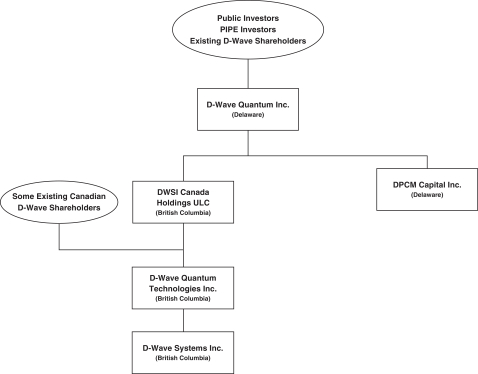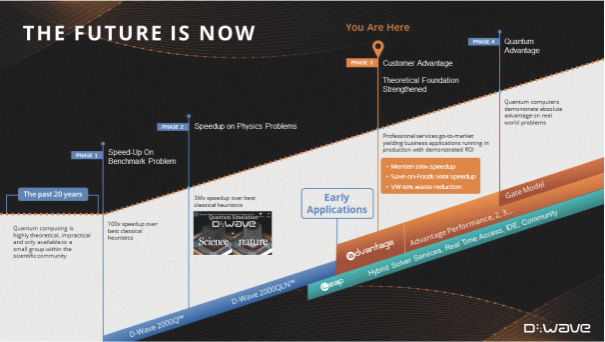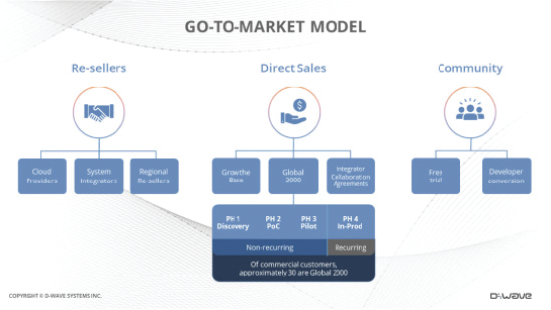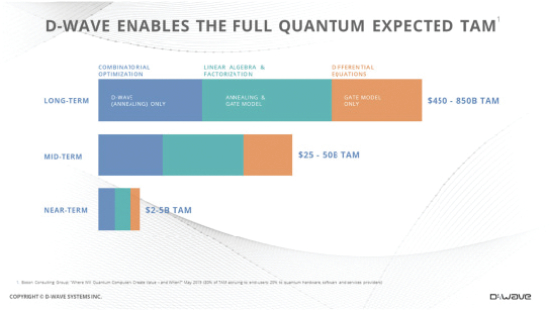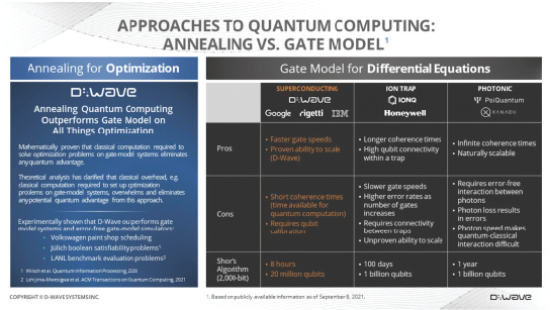The information in this prospectus is not complete and may be changed. Neither we nor the selling stockholder may issue or sell these securities until the registration statement filed with the Securities and Exchange Commission is effective. This prospectus is not an offer to sell these securities and it is not soliciting an offer to buy these securities in any state where the offer or sale is not permitted.
SUBJECT TO COMPLETION, DATED OCTOBER 19, 2022
PRELIMINARY PROSPECTUS

D-WAVE QUANTUM INC.
Up to 15,500,000 Common Shares
This prospectus relates to the resale, from time to time, of up to 15,500,000 Common Shares, par value $0.0001 per share (the “Common Shares”), by the selling stockholder, Lincoln Park Capital Fund, LLC (“Lincoln Park” or the “Selling Stockholder”).
The Common Shares to which this prospectus relates includes shares that have been or may be issued to Lincoln Park pursuant to a purchase agreement between us, D-Wave Systems Inc. (“D-Wave Systems”), DPCM Capital Inc. (“DPCM”) and Lincoln Park dated June 16, 2022 (the “Purchase Agreement”). Pursuant to the Purchase Agreement, Lincoln Park has agreed to purchase from D-Wave Quantum, at the option of D-Wave Quantum, up to $150,000,000 of Common Shares from time to time, at our discretion after the date of the registration statement of which this prospectus is a part is declared effective and after satisfaction of other conditions in the Purchase Agreement (the “Commencement Date”). On August 5, 2022 and August 25, 2022 we issued 127,180 Common Shares and 254,360 Common Shares, respectively, to Lincoln Park, in each case as consideration for its irrevocable commitment to purchase Common Shares under the Purchase Agreement.
Such shares were issued to Lincoln Park at an effective issuance price of $6.88 per Common Share in accordance with the Purchase Agreement. We may receive gross proceeds of up to $150,000,000 from the sale of Common Shares to Lincoln Park under the Purchase Agreement, from time to time.
Lincoln Park is an “underwriter” within the meaning of Section 2(a)(11) of the Securities Act of 1933, as amended (the “Securities Act”). See “Plan of Distribution” on page 164 for more information about how Lincoln Park may sell the Common Shares being registered pursuant to this prospectus.
Lincoln Park may sell the Common Shares described in this prospectus in a number of different ways and at varying prices. The price that Lincoln Park will pay for the shares to be resold pursuant to this prospectus (which will be equitably adjusted for any reorganization, recapitalization, non-cash dividend, forward or reverse stock split, or other similar transaction occurring during the business days used to compute such price) will depend upon the timing of sales and will fluctuate based on the trading price of the Common Shares and, depending on whether the purchase is a Regular Purchase (as defined below) or an Accelerated Purchase (as defined below), will be set as either (a) the lower of (i) the lowest trading price for Common Shares on the applicable Purchase Date (as defined below) and (ii) the average of the three lowest closing sale prices for Common Shares during the ten consecutive business days ending on the business day immediately preceding such Purchase Date or (b) a purchase price equal to the lesser of 95% of (x) the closing sale price of Common Shares on the Accelerated Purchase Date (as defined below) and (y) of the volume weighted average price of Common Shares on the Accelerated Purchase Date (during a time period specified in the Purchase Agreement). The Purchase Agreement prohibits D-Wave Quantum from directing Lincoln Park to purchase any D-Wave Quantum Common Shares if the closing price of the D-Wave Quantum Common Shares is less than the floor price of $1.00 (the “Floor Price”). See the section entitled “Lincoln Park Transaction.”
While the Purchase Agreement limits the rate at which we can sell Common Shares to Lincoln Park, due to the significant number of Common Shares that were redeemed in connection with the Transaction (as defined below), the number of Common Shares that we can sell to Lincoln Park under the Purchase Agreement could constitute a considerable percentage of our public float at the time of such sales. As a result, the resale by Lincoln Park of Common Shares pursuant to this prospectus could have a significant negative impact on the trading price of the Common Shares. See “Lincoln Park Transaction” on page 166 for more information.
In addition, we have filed a separate registration statement registering the issuance to and resale by certain third parties unrelated to Lincoln Park (the “Resale Registration Statement”) of up to an aggregate of 89,152,764 Common Shares and 8,000,000 Warrants (as defined below) issued prior to, or in connection with, the Transaction. The number of Common Shares that the Selling Securityholders may sell into the public markets pursuant to the Resale Registration Statement may exceed our public float. The 89,152,764 Common Shares (including Common Shares underlying Warrants and Common Shares underlying Exchangeable Shares (as defined below)) that may be resold pursuant to the Resale Registration Statement represent approximately 81% of the Common Shares (including Common Shares underlying Exchangeable Shares) outstanding as of August 5, 2022 (approximately 58% on a fully-diluted basis). On a combined basis with the up to 15,500,000 Common Shares being registered on this registration statement, we are registering 104,652,764 Common Shares that may be resold from time to time pursuant to the registration statements represent approximately 95% of the Common Shares (including Common Shares underlying Exchangeable Shares) outstanding as of August 5, 2022 (approximately 69% on a fully-diluted basis). Any sales of such Common Shares or Warrants by such certain third parties unrelated to Lincoln Park could similarly have a significant negative impact on the trading price of Common Shares.
We have agreed to bear all of the expenses incurred in connection with the registration of the shares to which this prospectus relates. Lincoln Park will pay or assume discounts, commissions, and fees of underwriters, selling brokers or dealer managers, if any, incurred in connection with the sale of Common Shares.
We are an “emerging growth company” under applicable Securities and Exchange Commission (“SEC”) rules and, as such, have elected to comply with certain reduced public company disclosure requirements for this prospectus and future filings. See “Prospectus Summary—Implications of Being an Emerging Growth Company.”
Our Common Shares are listed on The New York Stock Exchange (the “NYSE”) under the symbol “QBTS”. On October 18, 2022 the last reported sales prices of the Common Shares on the NYSE was $5.23.
Investing in our securities involves a high degree of risk. You should review carefully the risks and uncertainties described under the heading “Risk Factors” beginning on page 21 of this prospectus, and under similar headings in any amendments or supplements to this prospectus.
Neither the SEC nor any state securities commission has approved or disapproved of these securities, or determined if this prospectus is accurate or complete. Any representation to the contrary is a criminal offense.
The date of this prospectus is , 2022.
